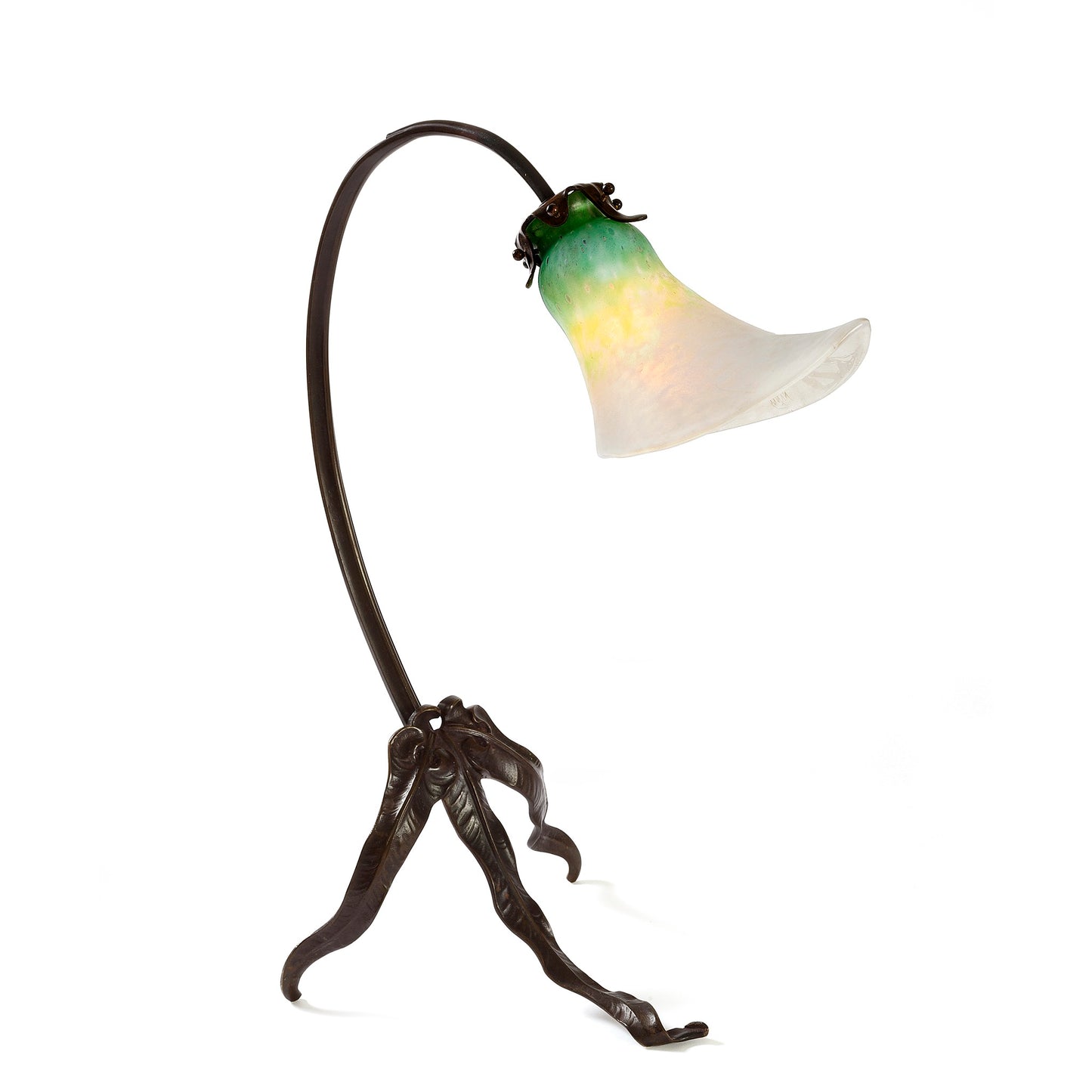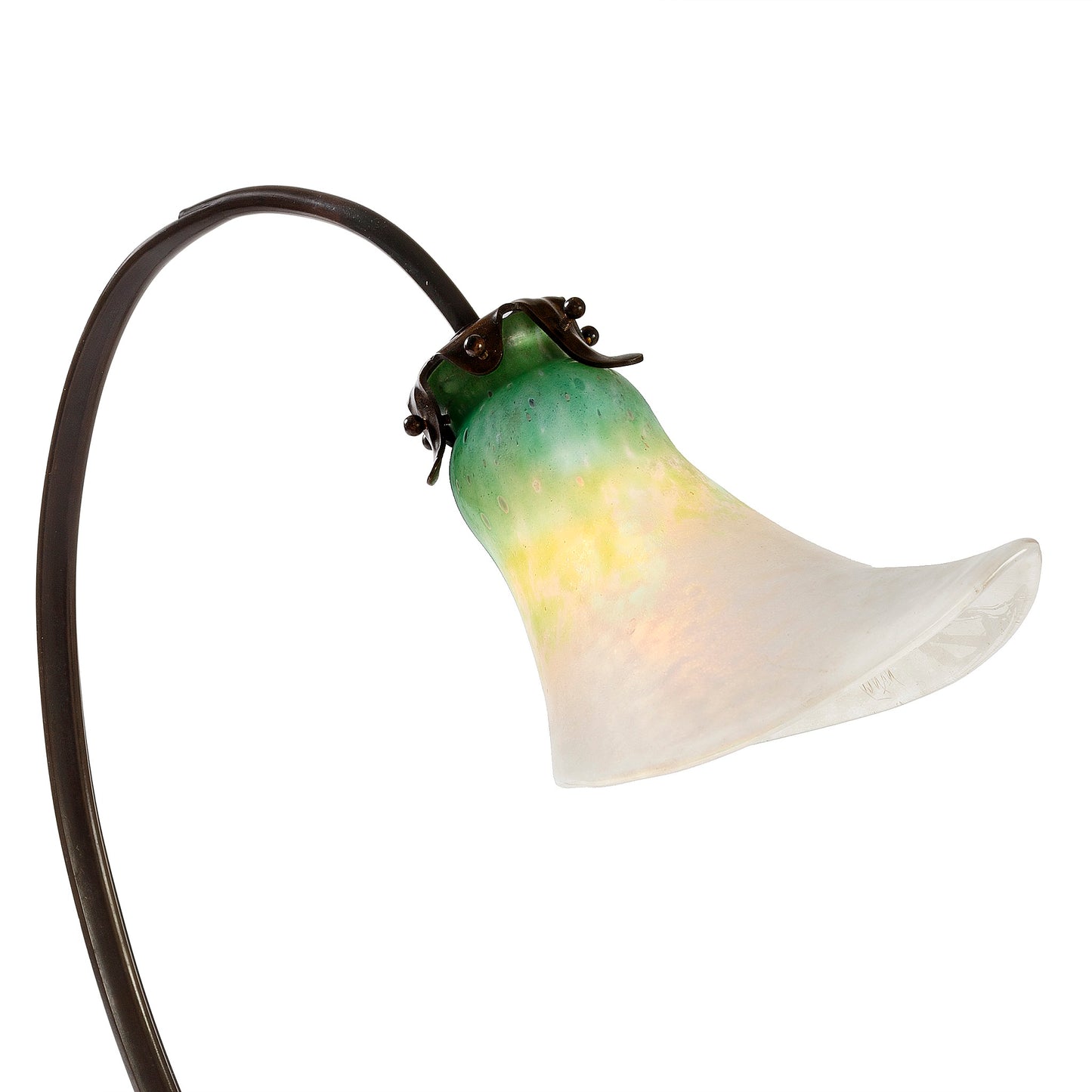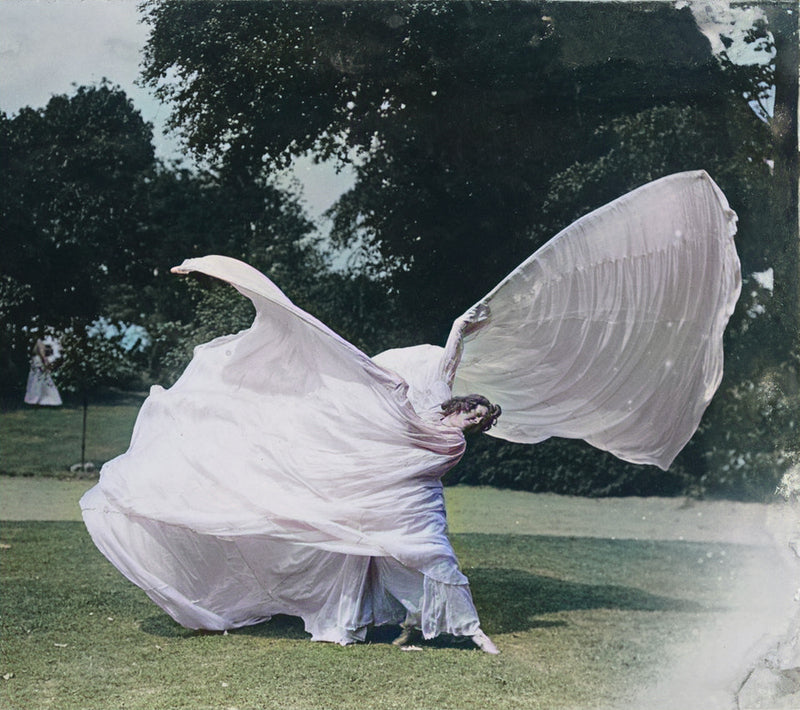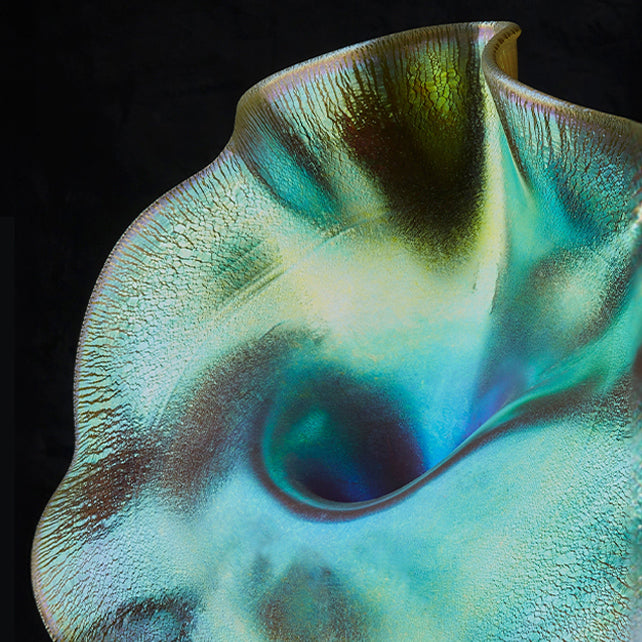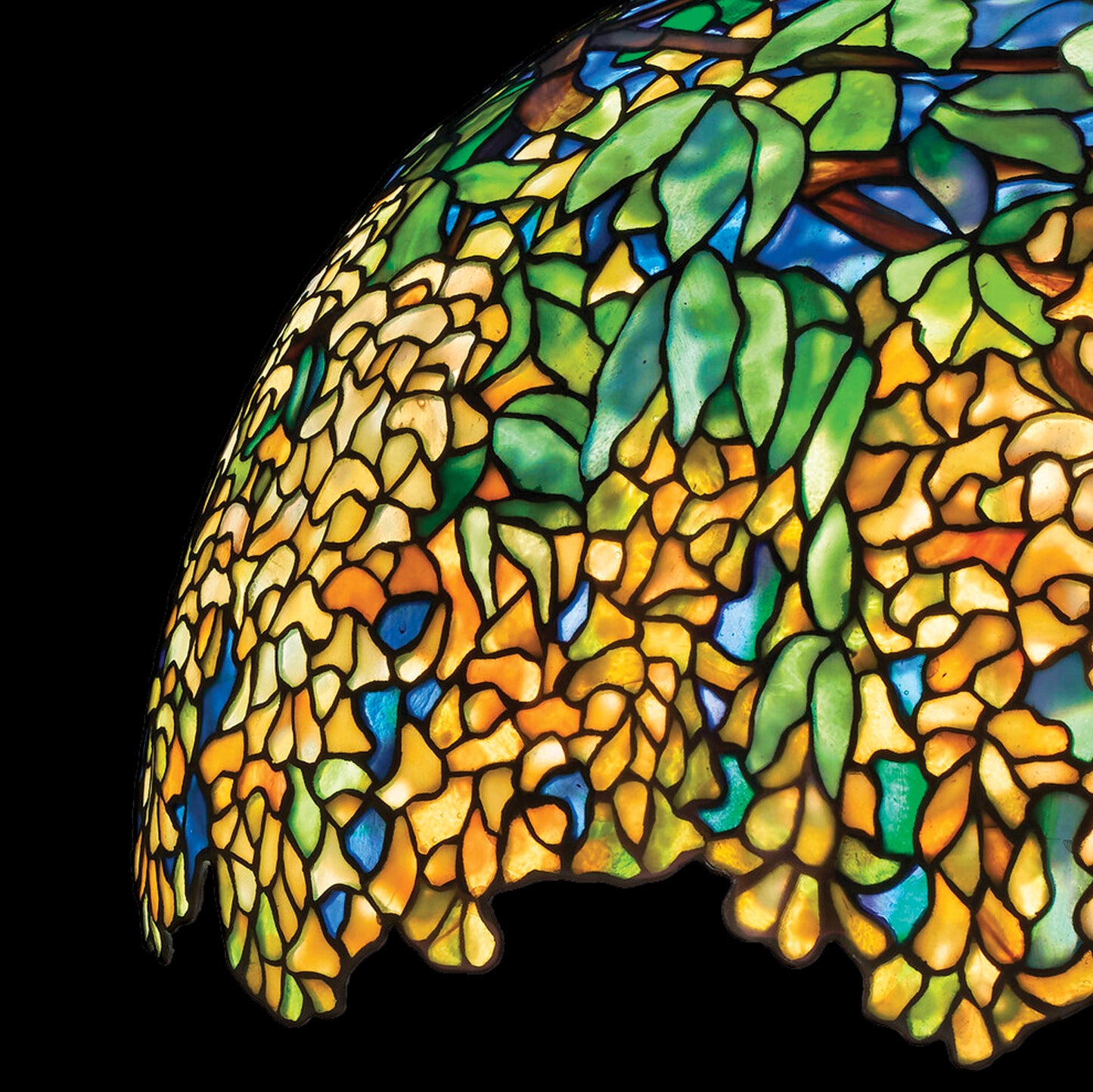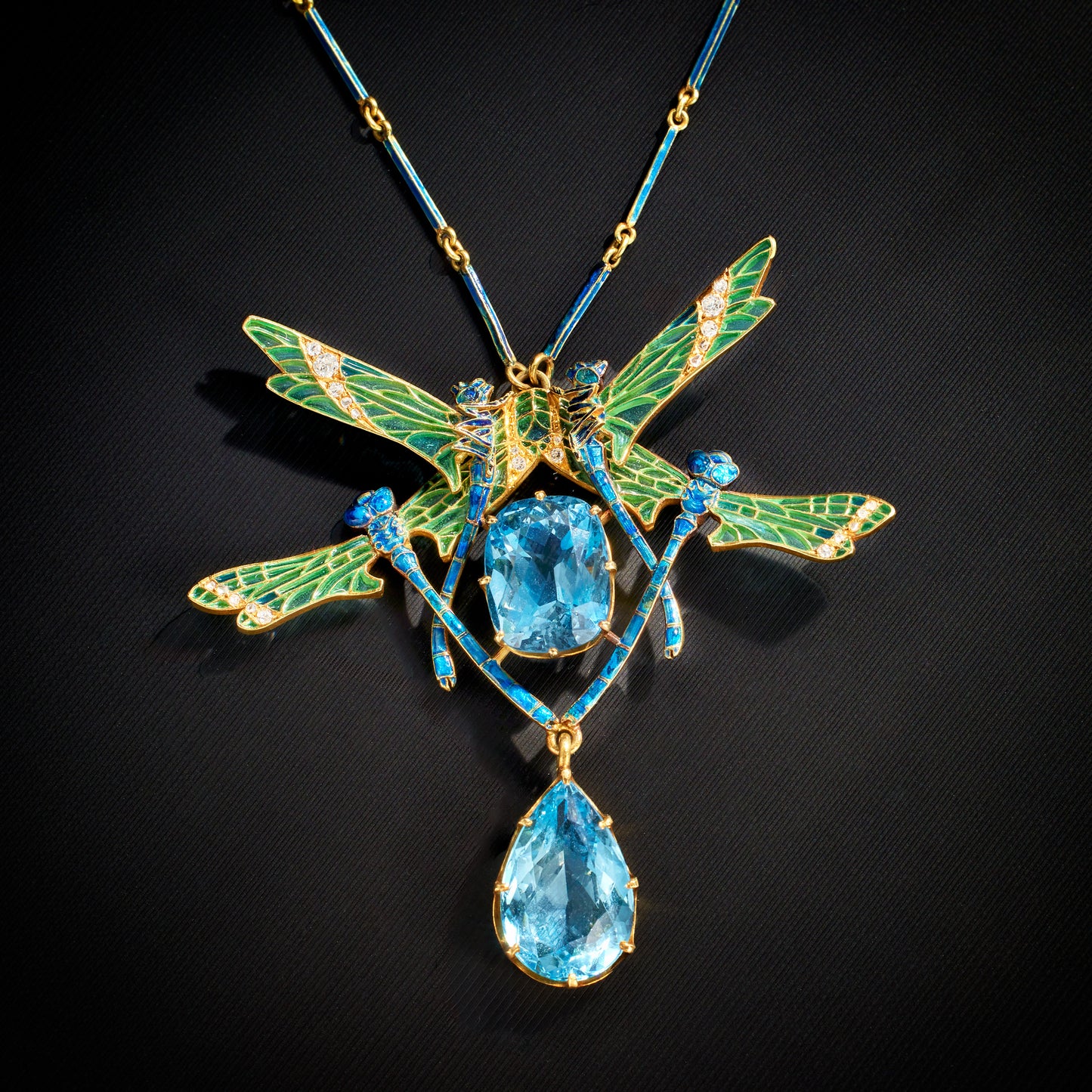Daum's glass was made using the Intercalaire technique. The term Intercalaire translates from the French to mean "inserted" and signifies the process of applying two layers of decoration to a piece of glass. The first layer is covered with a glass skin that ultimately provides the surface for the second layer of decoration. The technique was first developed by Eugène Kremer from Meisenthal (1890) in collaboration with Emile Gallé. The art of painting between layers of glass was first patented in
Berlin on February 21, 1896 and in Paris almost a year later on March 23, 1897. Shortly before 1900, the Daum brothers registered a similar kind of decoration that they called décoration intercalaire à grand feu (1899). Charles Schneider, who designed for Daum, had modified the technique to include the application of colored flecks and streaks of enamel paint between layers of glass Before applying the enamel paint onto a piece of glass, the glass had to be completely cooled down. After the enamel application, the glass was then repeatedly overlaid with additional layers and reheated. Because of their magical appearance, vases with intercalaire decoration immediately enjoyed huge success at the Paris World Fair of 1900. However, the steps of recurrent heating and cooling down of the glass required extremely delicate manufacturing procedures and the Daum brothers eventually stopped producing intercalaire vases around 1904.












